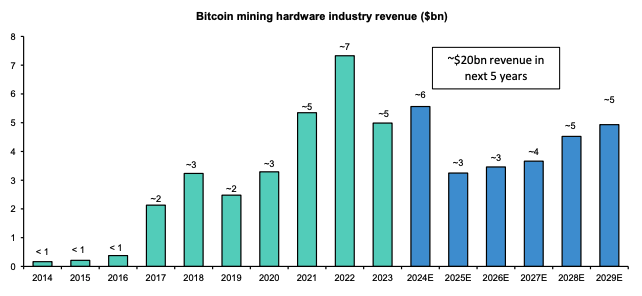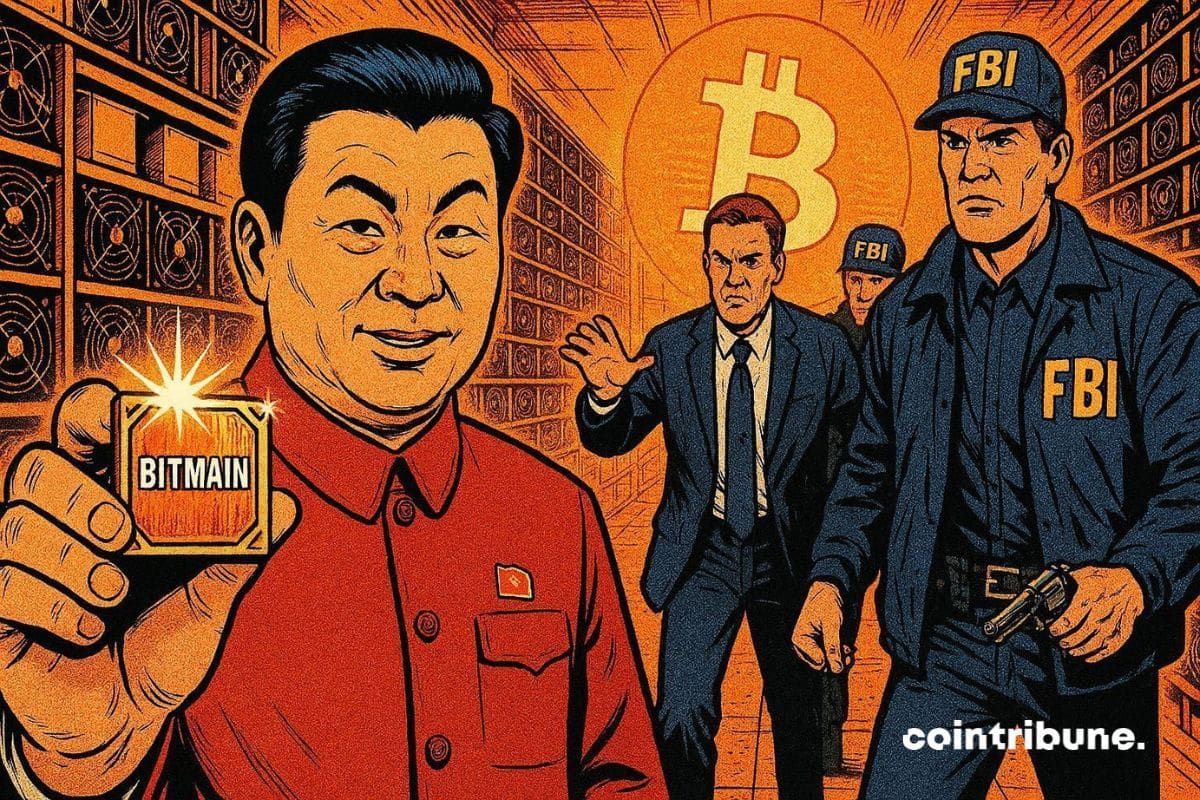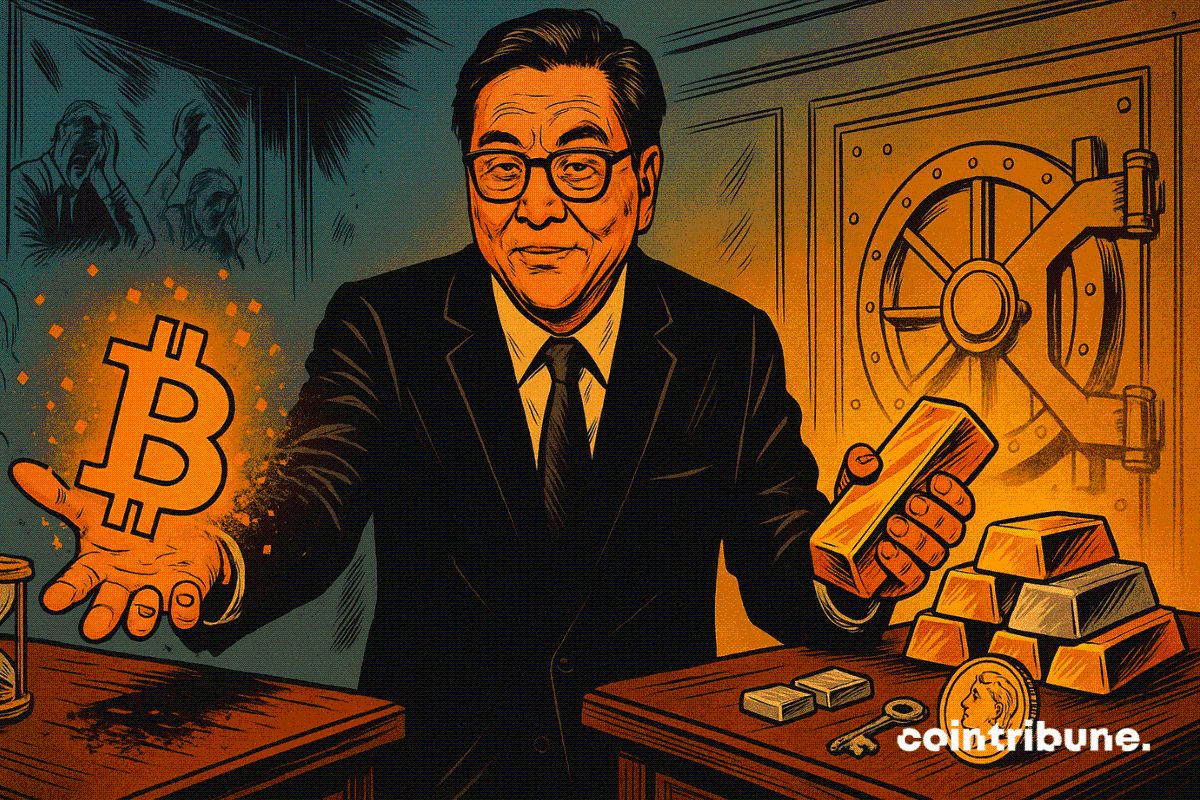Bernstein says mining hardware is a $20 billion opportunity amid Trump's push to 'make bitcoin' in the US
Bitcoin mining chips and hardware represent a $20 billion opportunity over the next five years, according to analysts at Bernstein.The analysts see this as favorable for U.S. Bitcoin miners amid Donald Trump’s recent push to “make bitcoin” in America.
The Bitcoin BTC -4.36% mining chip and hardware industry represents a $20 billion total addressable market over the next five years, according to analysts at research and brokerage firm Bernstein.
The Bitcoin mining hardware market has been historically dominated by China-based companies such as Bitmain, with over 80% market share, Gautam Chhugani, Mahika Sapra and Sanskar Chindalia wrote in a note to clients on Tuesday. However, the launch of new mining chips in the U.S. by Block and Auradine presents an opportunity to diversify the supply chain, compete on advanced chip design and provide access to global foundry fabrication capacity, the analysts said.
Earlier this month, Block, co-founded by former Twitter CEO Jack Dorsey, announced an agreement to supply Core Scientific with its new 3-nanometer ASIC mining chips, representing approximately 15 EH/s of hashrate and more energy-efficient than current designs — a deal Bernstein values at $300 million and expects more U.S. Bitcoin miners to follow.
Auradine, backed by Bitcoin miner MARA, recently shipped its AT1500 Teraflux miners (22J/TH) and announced new AT2880 and AI3680 models. The Teraflux 2800 series uses 3nm ASIC chips with 14J/TH efficiency. Auradine closed an $80 million Series B round in April.
“We expect 15-30% growth in annual mining equipment demand led by increasing network hashrate (supported by our bitcoin price conviction) and replacement/upgrading of existing capacity to make mining more efficient after rewards are cut in half in bitcoin terms after halving,” the analysts said. “Based on today’s rack rate prices and pre-contract mining capacity rates, the hardware revenue opportunity is ~$3-5 billion annually.”

Bitcoin mining hardware industry revenue. Image: Bernstein.
Tailwinds for U.S. Bitcoin miners
Combined with Republican presidential candidate Donald Trump’s recent push to “make bitcoin” in America, promising to turn the U.S. into a "Bitcoin mining superpower" and provide increased electricity generation capacity for the industry, Bernstein sees this as a tailwind for U.S. Bitcoin miners, with the “potential to improve fleet efficiency, drive lower capex (from lower chip pricing) and spare power capacity for AI/HPC opportunities.”
“New U.S based competition in mining chips promises to diversify the mining supply chain and reduce the dominance of Bitmain and others. Also, there is opportunity for more innovation with open source and customizable software, by partnering closely with U.S. based miners to improve fleet efficiency (e.g the Core Scientific-Block deal),” the analysts said.
Bernstein sees this as particularly applicable to large-scale mining consolidators, rating four public U.S. miners within its coverage: Riot Platforms, CleanSpark, IREN and Core Scientific as outperform.
On Monday, the Bernstein analysts said crypto is “ no longer a bipartisan issue ” amid Trump's Bitcoin promises and Kamala Harris' “late” olive branch to the industry.
Chhugani maintains long positions in various cryptocurrencies. Certain Bernstein affiliates act as market makers or liquidity providers in the debt securities of Riot Platforms.
Disclaimer: The content of this article solely reflects the author's opinion and does not represent the platform in any capacity. This article is not intended to serve as a reference for making investment decisions.
You may also like
Empowered by AI Avatars, How Does TwinX Create Immersive Interaction and a Value Closed Loop?
1. **Challenges in the Creator Economy**: Web2 content platforms suffer from issues such as opaque algorithms, non-transparent distribution, unclear commission rates, and high costs for fan migration, making it difficult for creators to control their own data and earnings. 2. **Integration of AI and Web3**: The development of AI technology, especially AI Avatar technology, combined with Web3's exploration of the creator economy, offers new solutions aimed at breaking the control of centralized platforms and reconstructing content production and value distribution. 3. **Positioning of the TwinX Platform**: TwinX is an AI-driven Web3 short video social platform that aims to reconstruct content, interaction, and value distribution through AI avatars, immersive interactions, and a decentralized value system, enabling creators to own their data and income. 4. **Core Features of TwinX**: These include AI avatar technology, which allows creators to generate a learnable, configurable, and sustainably operable "second persona", as well as a closed-loop commercialization pathway that integrates content creation, interaction, and monetization. 5. **Web3 Characteristics**: TwinX embodies the assetization and co-governance features of Web3. It utilizes blockchain to confirm and record interactive behaviors, turning user activities into traceable assets, and enables participants to engage in platform governance through tokens, thus integrating the creator economy with community governance.

Aster CEO explains in detail the vision of Aster privacy L1 chain, reshaping the decentralized trading experience
Aster is set to launch a privacy-focused Layer 1 (L1) public chain, along with detailed plans for token empowerment, global market expansion, and liquidity strategies.

Bitcoin Under Pressure Despite Fed Optimism

Kiyosaki Trades BTC Gains For Long-Term Cashflow Assets

